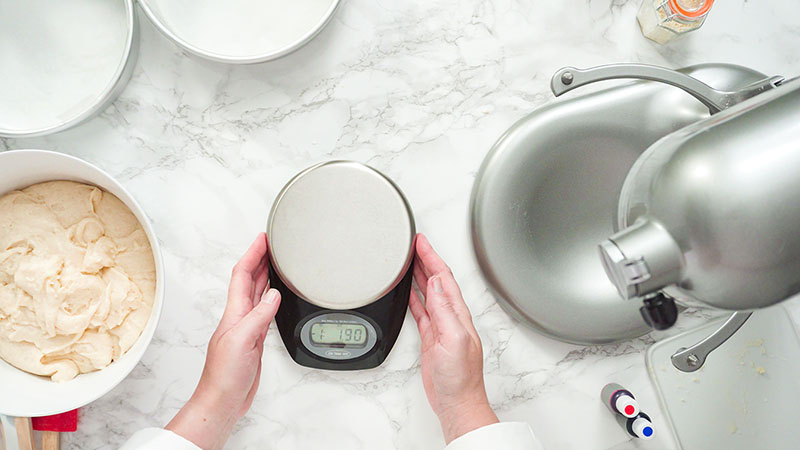
Master Measurements for Cooking and Baking Success

If you’re a serious cook or baker, you know that measuring ingredients accurately is key to success. With the right measuring cups and techniques, you’ll never have to suffer through a failed recipe again. In this guide, we’ll show you how to use measurements for cooking and baking for both dry and liquid ingredients, why it’s crucial to use the right type of measuring cup, and the benefits of using kitchen scales.
How to use a measuring cup for ingredients
When it comes to dry ingredients, like flour, you’ll want to use a dry measuring cup. This specific type of cup is designed to measure dry ingredients accurately and is typically made of metal or plastic.

Follow these 3 simple steps:
- Spoon the ingredient into the cup
- Level it off with a straight edge (like a knife or spatula)
- Check the measurement at the marking on the cup
Why accurate measurements matter
Accurate measurements are crucial for ensuring that your baked goods turn out as intended. Whether you’re using volume or weight measurements, make sure to use the right type of measuring cup and level it off for the best results.
Invest in some kitchen scales
Although we’ve been giving advice on measuring cups, in a lot of cases, using a reliable set of kitchen scales is a great way to ensure that you get a consistent measurement every time, as it takes the guesswork out of the equation.
The scales don’t have to be expensive or particularly fancy but we do like ours to be digital for accuracy and compact enough to be put away.

Metric vs imperial measurements for cooking and baking
As someone who is passionate about cooking and baking, you already understand the importance of measuring ingredients accurately. Even a small deviation from the recipe can significantly impact the final outcome of your dishes. To help ensure your recipes always turn out perfectly, it is crucial to understand the difference between metric and imperial measurements.
Mix your cake NOT your measurements

The problem with mixing metric and imperial weights is that they are not interchangeable. The weight of an ingredient in metric units can be significantly different from the weight of the same ingredient in imperial units. This can lead to recipes that are too dry or too wet, causing the final product to be less than desirable.
To avoid confusion and ensure accurate measurements, it’s important to stick to one measurement system when following a recipe.
If the recipe calls for metric measurements, use metric units. If the recipe calls for imperial measurements, use imperial units. You can use a conversion chart to convert between metric and imperial units, but it is best to choose one system and stick to it to get the best results.
Curious about the weight of a cup measurement for different types of ingredients?
These conversions may differ slightly based on the specific product used, but it gives you an idea of approximate weights and clearly shows the variances for a 1 cup measure for different ingredients:
Caster sugar – 7oz
Soft brown sugar – 7.05oz
Granulated sugar – 7.05oz
Icing sugar – 4oz
Plain flour – 4.25oz
Self-raising flour – 4.5oz
Wholemeal flour – 4.25oz
Ground almonds – 4oz
Cocoa powder – 3oz
Desiccated coconut – 3.5oz
Raisins/sultanas – 5.3oz
Rolled oats – 2.5oz

By following this guide, you can ensure that your baked goods will turn out exactly as desired every time.
Kitchen Helper guide
Sign up to receive our newsletter
For the latest producer info, shows, markets, recipes, competitions and more each month.
Please be assured that we don't sell or pass on your information to third parties.
Keep up to date with:
- New and approved producers and produce
- Offers, discounts, competitions and more
- Seasonal produce and great tasting downloadable recipe ideas
- Shows, events and markets
